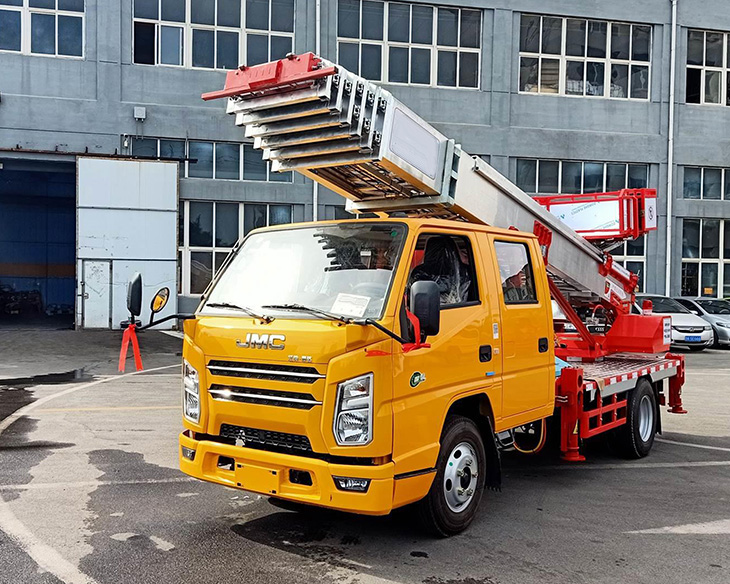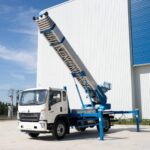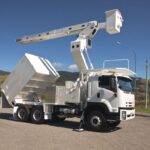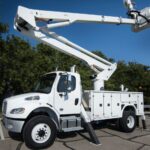In the realm of construction, maintenance, and various industrial tasks, the need for efficient vertical accessibility is paramount. From reaching high shelves in a warehouse to undertaking complex installations in towering buildings, the ability to access elevated areas safely and efficiently is essential. In response to this demand, ladder lift trucks have emerged as a valuable solution, revolutionizing the way vertical tasks are approached and executed.
The Evolution of Vertical Accessibility
Traditionally, accessing elevated areas involved ladders, scaffolding, or cumbersome manual lifting equipment. While these methods served their purpose, they often came with inherent limitations such as safety concerns, time inefficiency, and restricted accessibility in confined spaces. As industries evolved and the need for safer, more efficient solutions became apparent, ladder lift trucks emerged as a game-changer.
Understanding Ladder Lift Trucks
Ladder lift trucks, also known as ladder hoists or ladder elevators, are specialized vehicles designed to transport personnel and equipment to elevated locations swiftly and securely. These vehicles typically feature a hydraulic or electric-powered lift mechanism attached to a ladder or platform, allowing operators to ascend to various heights with ease.
The versatility of ladder lift trucks lies in their ability to navigate different terrains and environments, including rough terrain, narrow spaces, and indoor settings. Whether it’s loading materials onto a rooftop, accessing high shelves in a warehouse, or performing maintenance tasks on a tall structure, these vehicles provide unparalleled accessibility.
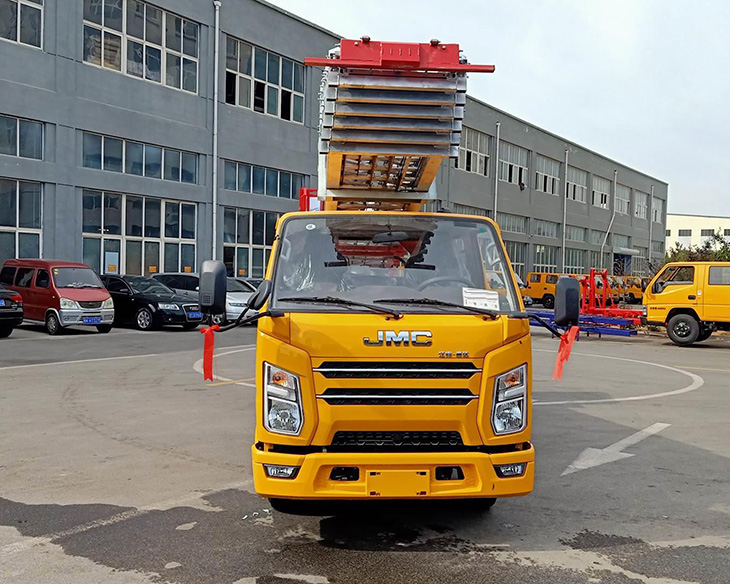
Enhancing Efficiency and Safety
One of the primary advantages of ladder lift trucks is their ability to enhance both efficiency and safety in vertical tasks. Unlike traditional methods that require manual labor and multiple trips up and down ladders, these vehicles streamline the process by enabling operators to transport personnel and equipment in a single trip.
By minimizing the need for manual labor and reducing the risk of accidents associated with working at heights, ladder lift trucks contribute to improved productivity and enhanced workplace safety standards. Additionally, many models come equipped with safety features such as harness attachment points, non-slip platforms, and emergency stop mechanisms, further mitigating risks and ensuring operator well-being.
Versatility in Applications
The versatility of ladder lift trucks extends across a wide range of industries and applications. In construction, these vehicles facilitate the installation of windows, siding, and roofing materials on multi-story buildings. In the telecommunications sector, they aid in the installation and maintenance of communication towers and antennas. Similarly, in warehousing and logistics, ladder lift trucks expedite the process of stock replenishment and inventory management by providing access to high shelves and storage areas.
Moreover, ladder lift trucks are invaluable in emergency response situations, enabling rescue teams to access elevated areas quickly during fire incidents, natural disasters, or building evacuations. Their ability to navigate challenging terrain and provide rapid vertical access can be instrumental in saving lives and minimizing property damage.
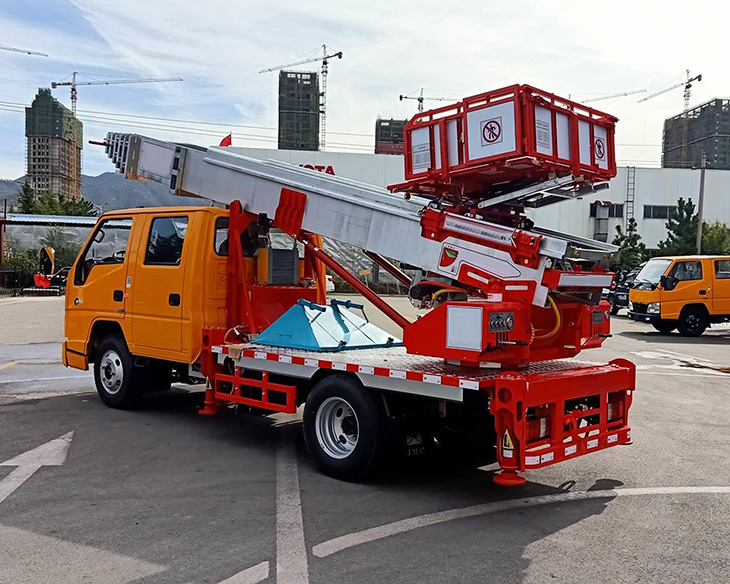
Environmental Considerations
In addition to their operational benefits, ladder lift trucks also offer environmental advantages. Many modern models feature energy-efficient electric motors or hybrid propulsion systems, reducing emissions and minimizing the environmental footprint associated with vertical tasks. Furthermore, their compact design and maneuverability contribute to reduced congestion and noise pollution in urban environments, making them ideal for use in densely populated areas.
Future Trends and Innovations
As technology continues to advance, the evolution of ladder lift trucks is expected to continue with a focus on enhanced performance, automation, and connectivity. Future innovations may include the integration of artificial intelligence for predictive maintenance, remote monitoring capabilities for fleet management, and advanced safety features such as collision avoidance systems and automatic emergency braking.
Furthermore, the growing emphasis on sustainability and eco-friendliness is likely to drive the development of even more efficient and environmentally conscious ladder lift truck designs. From lightweight materials to regenerative braking systems, manufacturers are exploring various avenues to reduce energy consumption and minimize environmental impact without compromising performance or safety.
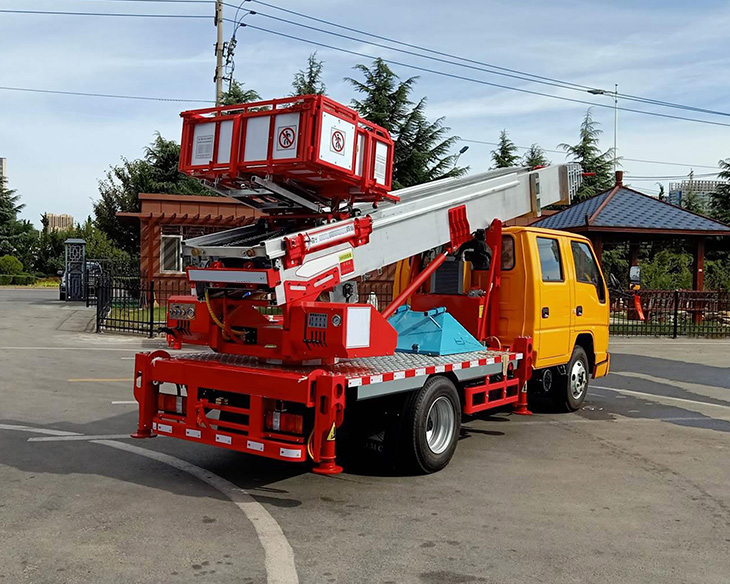
Conclusion
In conclusion, ladder lift trucks represent a significant advancement in vertical accessibility, offering unparalleled efficiency, safety, and versatility across a wide range of industries and applications. By streamlining vertical tasks and providing secure access to elevated areas, these vehicles have become indispensable assets for construction, maintenance, emergency response, and logistical operations.
As technology continues to evolve and societal priorities shift towards sustainability and safety, ladder lift trucks are poised to play an increasingly pivotal role in shaping the future of vertical mobility. With ongoing innovation and a commitment to excellence, these vehicles will continue to enhance accessibility for vertical tasks, driving productivity, safety, and environmental stewardship in the years to come.

